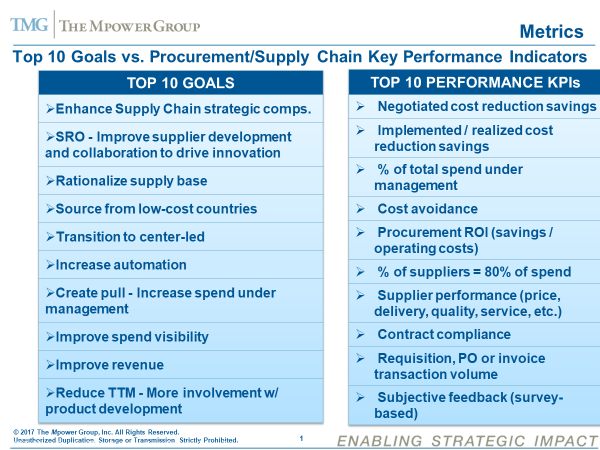If I knew the answer to that, I would have retired long time ago having made tons of money. Understanding what made that chicken decide to move from A to B would perhaps help me better understand how to get organizations to decide to move and perhaps help them cross the road.
And here’s the conundrum – it’s not that we don’t know that we need to move – we just choose not to. Here is some more data from that Deloitte study. The top 4 capabilities identified in high performing leaders (the top quartile; Level 5 Maturity – the TMG version: they’re all the same) were Balanced Scorecard(we call them Value Drivers), Executive Advocacy(we call it Change Management & Consulting), Strategic Decision Making(we call it Governance and Decision Making) and Digital Procurement(we call it Technology). I can assure you that these have been talked about for at least a decade and identified as critical capabilities and yet we continue to fall behind in them. The study further states that only 24% of CPOs think they are acting as a Strategic Business Partner and 86% aspire to be(what do the other 14% aspire to be?) and yet when you look at their balanced scorecards, the top 5 KPIs used by procurement to measure themselves are:
- OPEX Savings
- CAPEX Savings
- Cost Avoidance
- Supplier Performance
- Efficiency
And that list does not represent a balanced scorecard which also aligns with the Value Drivers of our stakeholders in too many organizations?
For further evidence, take a look at the slide below where we show that even when the goals are balanced, we still continue to measure ourselves using the old traditional metrics – no different than the study above. And this slide is quite old. It’s not that we don’t know that our metrics are not aligned with our stakeholders?

We often hear from clients on how they cannot justify their training budgets because they are unable show the benefits. A quick discussion quickly leads to the conclusion that they are looking for competency development through training and therein lies the disconnect. Competency only happens when training is ADOPTED and yet we spend enormous amounts of time trying to convince clients to develop an adoption strategy to ensure there is competency development which is what delivers the benefits. It’s not they are not being told?

Similarly, we have conducted numerous diagnostics where we ask executives to identify what competencies they think they need to have in their organizations to succeed. Invariably, without fail, almost a hundred percent of the time, they identify what we call Strategic Competencies(Change Management, Consulting, Collaboration etc. etc.). Then we ask them if those are the competencies that they are predominantly using to hire, promote and most importantly train their people and they are uncomfortable in acknowledging that they are not. For example, most of their training budgets are spent on tactical competencies. Again, it’s not that we don’t know?
So I wish I knew why the chicken crossed the road because it sure would be helpful with clients 😊.

